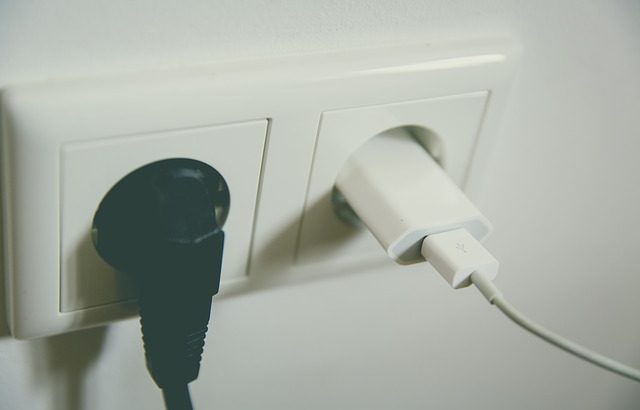Tips for Using Small Appliances When Travelling
Travelling is a satisfying goal in life. Whether the reason may be for business or pleasure, the thought of going to another country is an exciting experience. The thrill extends from planning to preparation but will surely end upon discovery of difference in electrical systems.
Of course, no matter how much light you want to travel, you need to bring along some small appliances such as laptops, mobile phones, chargers and hairdryers. It is for this reason that travellers should not limit their research to currency, language and policies but also with the electrical system of the destination country. The electrical system includes plug configurations and voltage and alternating cycles of the particular state.
There are no worries when it comes to bringing small appliances and electronics during travelling as long as you have the right equipment needed for them to function in any electrical system.
Listed here are few essential tips for using small appliances and electronics when travelling:
Know What Particular Appliances to Bring
It is important to finalize what specific important appliances you need to bring on your trip. There are appliances that are available in most hotels such as irons and hair dryers so you do not have to bring your own. For razors and toothbrushes, you can easily use the manual counterparts instead of the electric ones. If your trip will last for a longer time, you can opt to buy these items there and avoid the hassle of bringing a lot of stuff in your baggage.
Learn About Their Electrical System
Each state has a different electrical system and you should be able to be acquainted with them before setting your foot so that your electronics and appliances can be of good use. The easiest one to deal with is the plug configuration. The US standard two-prong plug is also universal in Canada, South America and the Caribbean and in some places in Asia like Japan, Taiwan and Korea. However, for most parts of Europe, their outlets require plugs with two round prongs. Outlets in Singapore, Ireland and Great Britain require plugs with three flat prongs. Those in Australia, New Zealand and China also require three flat prongs but in a different configuration. For these diverse plug configuration requirements you need to prepare different adapters or add-on plugs. Even though several hotels offer adapters, you cannot tactlessly gamble but instead, prepare for different socket types. A number of adapters are mostly available at any hardware stores for cheaper prices.
Don’t Forget to Consider the Voltage
Voltage is the pressure under which the current flows through an electrical system. And this should be prominently considered. Most US appliances and electronics work around 110 volts. However, several foreign power companies produce electricity at 220 volts. While most appliances have special features of a toggle switch that allow them to work with both voltages, those non-dual appliances need converters so that the 220 electric currents can step down to 110 without the risk of burning out. Converters come in two different types. The one that runs on lesser power commonly referred as transformer converter is suitable for motorized appliances such as laptops, computers, radios, razors and recharging camcorders. The other one called high-power heating converter which uses a bigger power can run heating appliances like clothes steamers, curling irons and hair dryers. The power consumption, which is measured in watts, is generally indicated on the appliances. Appliances requiring more than 50 watts need high-power heating converters while those running in not as much as 50 watts require transformer converters. You can bring along two types of converters or only one but with the toggle switch feature. However, when using a converter with a toggle switch, make sure that the switch is in the proper setting to avoid the appliance from burning out. In addition, invest on hardwearing and long-lasting transformer converter because most of the ones in the market are not designed for uninterrupted use.
Identify and Choose the Appropriate Converters and Adapters
When buying converters, make sure to check the label and read the owner’s manual of the appliances you intend to use the converter on. When it comes to adapters, go for cheap but convenient kits that mostly include five different sized adapters that suit with almost any outlet out there. Bear in mind that even if your destination country operates on the same voltage with your origin, their outlets might be of dissimilar shapes. So it is best to buy all-in-one adapters that include the most common plug shapes. However, these types of adapters do not work for appliances that require being grounded. A more costly grounding adapter will work for them rightly.
Bring a Transformer Whenever Necessary
Another major difference in the electrical system is the alternating cycle of the electrical current or simply put, the number of times an electrical current changes directions per second. The alternating cycle in the US is 60 while in Europe and other foreign countries is 50. Even though this alternating cycle does not directly affect heating gadgets, it can cause damage to electronics such as computers and video equipment because they are designed to work with alternating cycle and may overheat. To avoid certain damages, bring along a transformer that allows 60-cycle electronic equipment to run with a 50-cycle system.
You can ask assistance from professional electricians and ask them about the proper adapter plugs, converters and transformers to carry on your next trip. Bet they have more necessary tips. After all, a perfectly planned and a well-prepared trip will definitely result to a powered-up travel experience.


Recent Comments